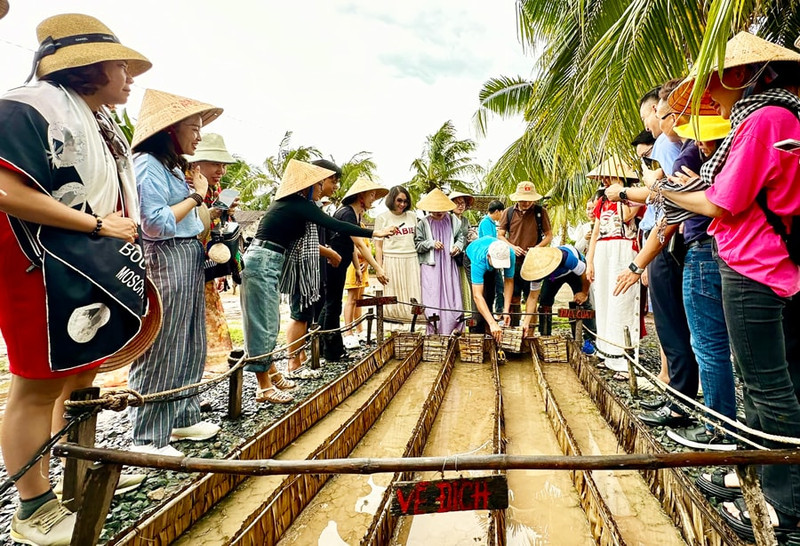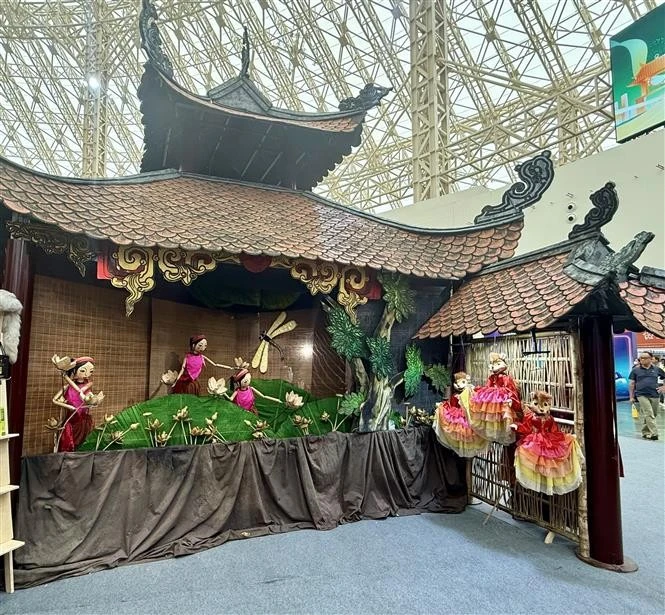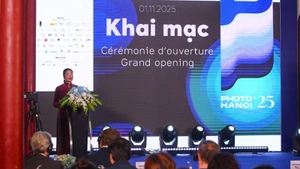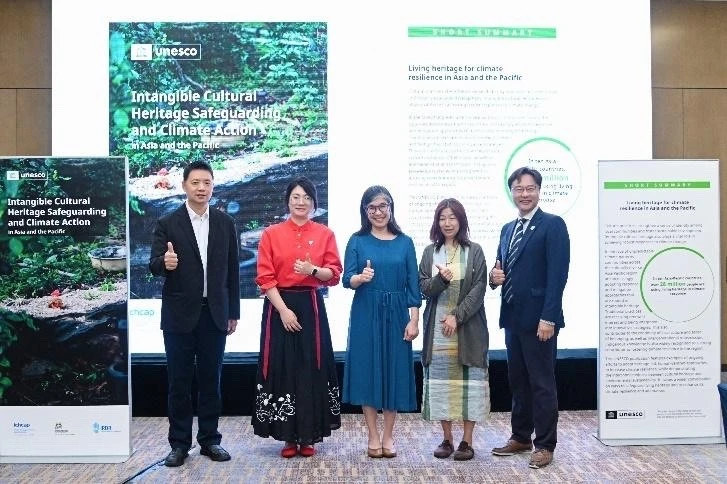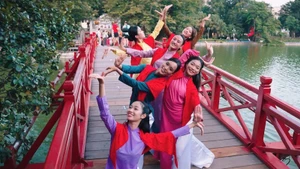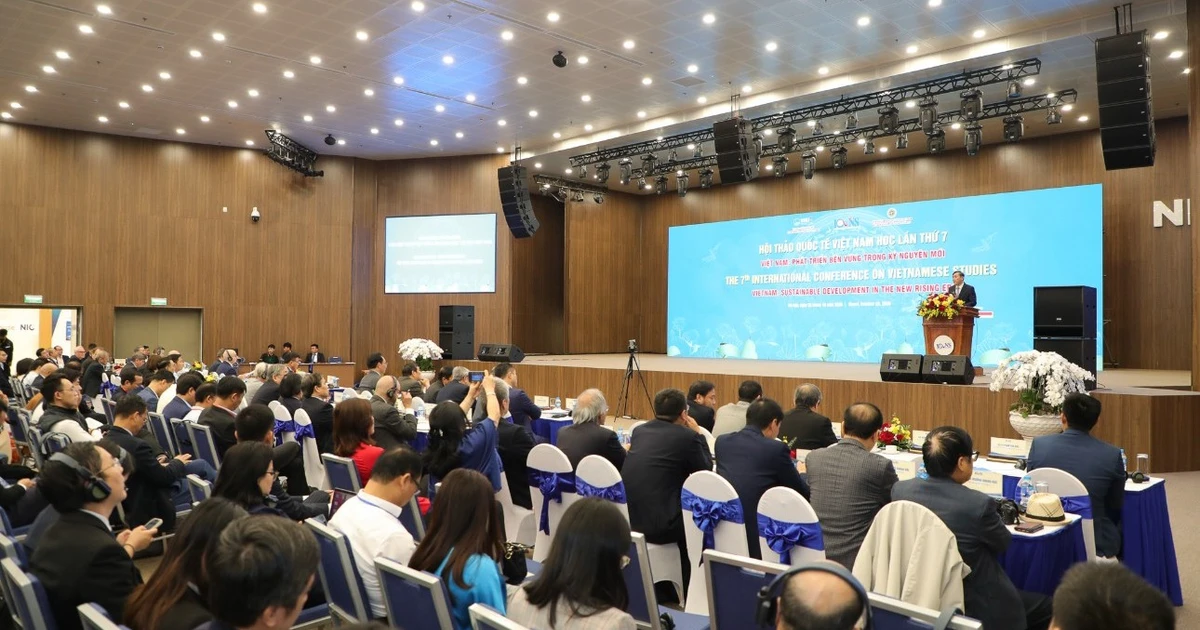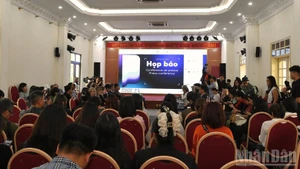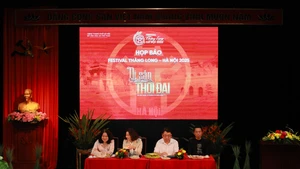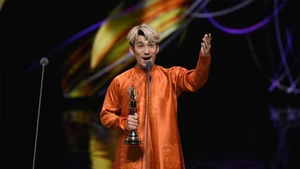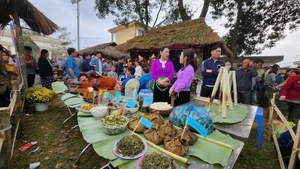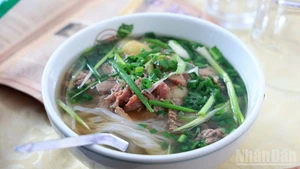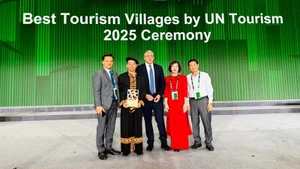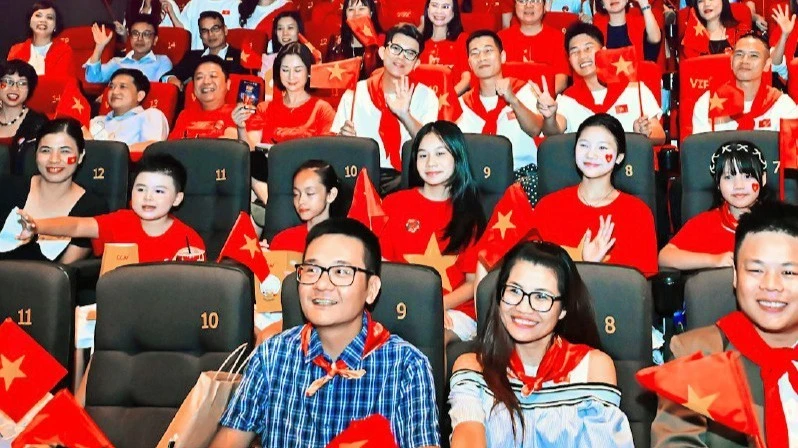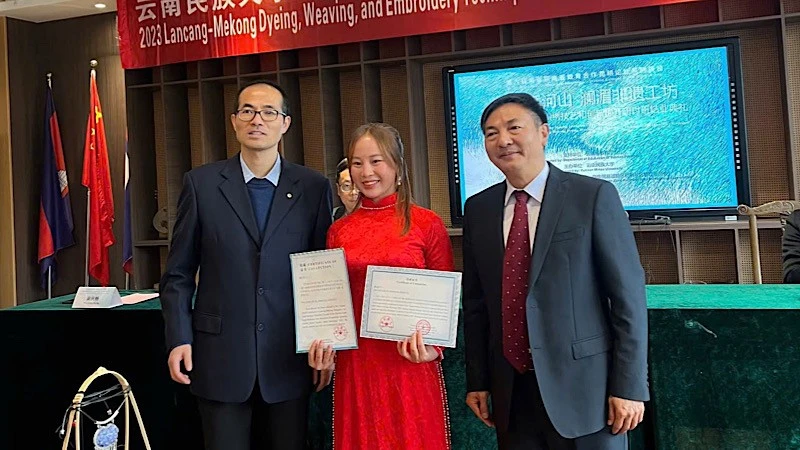"Message" conveying beliefs and culture
Within the treasure trove of folk culture, folk games and performances play an important part in shaping the traditional cultural identity of the Vietnamese people. These games and performances not only serve as a joyful part of the "festival" during traditional celebrations in the form of entertainment but also act as a "message" conveying humanistic values, cultural and historical meanings, and the unique cultural identity of each community or ethnic group. Furthermore, the organisation of folk games and performances during the spring festivals in Vietnam adds enticing elements that attract tourists.
All folk games and performances originate from cultural activities associated with agricultural practices, which have been passed down for thousands of years. Each game or performance symbolises different cultural values. Folk performances are an artistic form reflecting the community’s cultural beliefs and history, often linked to rituals. Meanwhile, folk games are an essential part of the "festival" aspect of traditional celebrations or are commonly enjoyed by children in their everyday lives.
Transmitted through many generations, folk games and performances in Vietnam are diverse and rich, distributed across regions, provinces, and cities. According to a study by the Vietnam Institute for Tourism Development Research, there are around 60 folk games and performances in the Red River Delta region alone, including activities such as wrestling, tug of war, human chess, cock fighting, grabbing the phet (festival), clay fireworks, and various folk arts such as Quan Ho singing, Cheo opera, Chau Van, Ca Tru, and water puppetry.
Among these, many folk games and performances have been listed as national intangible cultural heritage, such as the kite festival in Ba Duong Noi Village (Hong Ha Commune, Dan Phuong District), water puppetry art in Dao Thuc Village (Thuy Lam Commune, Dong Anh District) in Hanoi, and water puppetry and the art of drum singing in Binh Giang District (Hai Duong Province). Some folk games and performances have even been recognised by UNESCO as Intangible Cultural Heritage of Humanity, such as the tug of war ritual and games; the Then practice of the Tay, Nung, Thai peoples; and the art of Xoan singing in Phu Tho.
However, due to the impacts of rural urbanisation and modernisation, folk games and performances face the risk of disappearing or being distorted. Therefore, incorporating folk games and performances into tourism development is not only for diversifying tourism products and enhancing the visitor experience but also for preserving and promoting these folk traditions effectively.
"Glue" unites communities
In recent years, many localities have partnered with travel agencies to turn folk games and performances into an attractive experience in their tour programs. The most prominent example is the ancient town of Hoi An. In addition to visiting the ancient town and sampling local cuisine, tourists can participate in folk games such as blindfolded pot smashing, Bai Choi singing, stick-pushing contests, and folding palm leaves. These activities draw large numbers of locals and tourists, serving as the "glue" associated with community while also helping visitors gain insight into the spiritual life and customs of local people in Hoi An.
The Mekong Delta is another region that preserves and integrates many folk games into tourism. At Con Chim (Hoa Minh Commune, Chau Thanh District, Tra Vinh Province), tourists can relive their childhood with games like jump rope, marbles, and tin can throwing, particularly enjoying the unique crab racing game. In An Giang Province, visitors to Binh Thuy Temple Festival (Binh Thuy Commune, Chau Phu District) can participate in the lively boat racing and traditional games like Chinese chess and cock fighting.
In Hanoi, the festival season lasts throughout the first three months of the year, with folk games like wrestling, sack races, cockfighting, and human chess being staples. Additionally, ritual performances tied to folk beliefs, such as the seated tug of war at Tran Vu Temple (Thach Ban Ward, Long Bien District), and the crane-catching ritual at Vua Ba Temple Festival (Xuan Thu Commune, Soc Son District) are common. These festivals attract not only locals but also tourists from other regions.
In the 2025 festival season, Zakhar Dzmitrychenka, a Belarusian wrestler, became the first foreign athlete to participate in the wrestling contests at these village festivals in Hanoi and neighbouring provinces, drawing curiosity and causing many to follow him to the wrestling venues.
Sharing the reasons for attending these festivals, wrestler Zakhar Dzmitrychenka said that besides exchanging with local athletes, he wanted to immerse himself in the vibrant atmosphere of the traditional festivals and learn more about Vietnamese customs. This shows the tourism potential of festivals linked with folk games and performances that could be developed into an attractive product for both domestic and international tourists.
Identifying opportunities for development
In practice, the exploitation of folk games and performances to develop tourism and create unique tourism products has not yet been given adequate attention by local governments, tourism businesses, and communities.
According to Pham Hai Quynh, Director of the Asia Tourism Development Institute, currently, businesses mainly focus on constructing tours, festival tourism products, and spiritual tourism, emphasising rituals but rarely guide tourists to actively participate in folk games and performances. The reason is that domestic tourists often prefer visiting temples and pagodas for worship rather than “joining festivals.” International tourists also face language and cultural barriers in fully understanding the significance of folk games and performances, making it difficult for them to engage in these activities.
Another challenge is the redundancy of many folk games and performances across different localities. Research shows that folk games and performances present in multiple provinces with similar gameplay or performances can make the experience feel monotonous for tourists. Moreover, the seasonal nature of these festivals and the lack of promotion for folk games and performances prevent tourism agencies from having the necessary information to create related tourism products.
Regarding the role of tourism routes for folk games and performances, Vu Van Tuyen, Director of Travelogy Vietnam, proposed that tourism routes with themes such as "Experiencing folk games", "Exploring folk festivals", or "Cultural education semesters" should be developed for schoolchildren. These routes would focus on experiencing folk games and performances, understanding the history and meaning of each activity, and combining them with visits to historical sites to provide enriching and attractive experiences for tourists.
Dr Le Thi Minh Ly, Vice President of the Vietnam Cultural Heritage Association, emphasised the need to study and identify the historical, cultural, and contemporary significance of folk games and performances. This would help explain their value to tourists and encourage interaction. This effort requires involvement from local governments, travel businesses, and communities.
Additionally, folk games and performances need to be identified and catalogued, eliminating foreign influences and preserving their core elements to avoid product redundancy across regions. Communities must take responsibility for this to protect their folk traditions. Only in this way can unique tourism products and experiences be created to attract tourists.
To effectively exploit folk games and performances for tourism development, experts suggest four key solutions: policy mechanisms; development of products, markets, and tourism promotion; application of science and technology, human resource development; and investment and collaboration in tourism development based on folk games and performances. These four pillars will not only help enhance the value of folk games and performances linked with tourism but also foster the growth of cultural tourism products, an important category in Vietnam’s tourism strategy through 2030.
